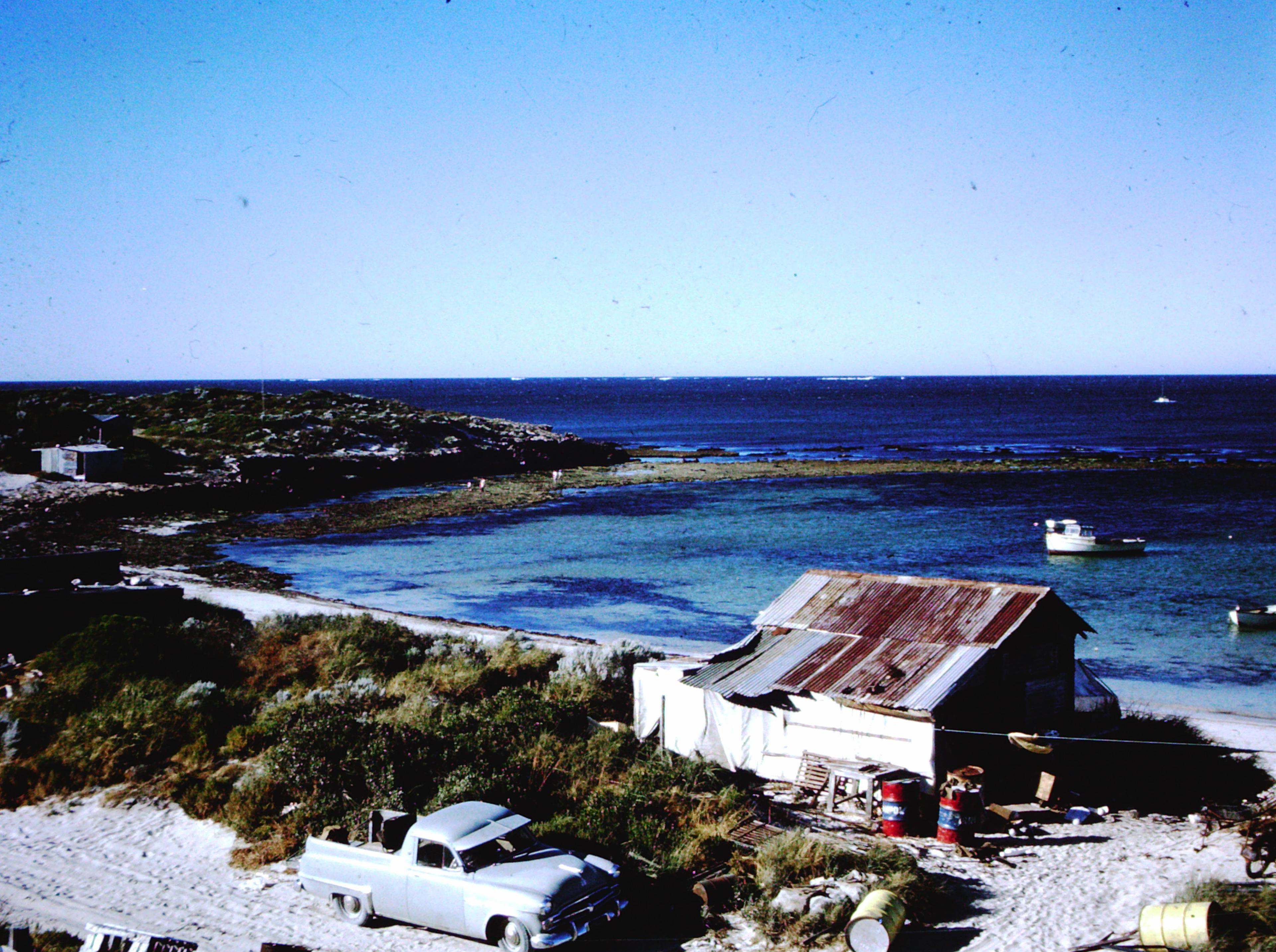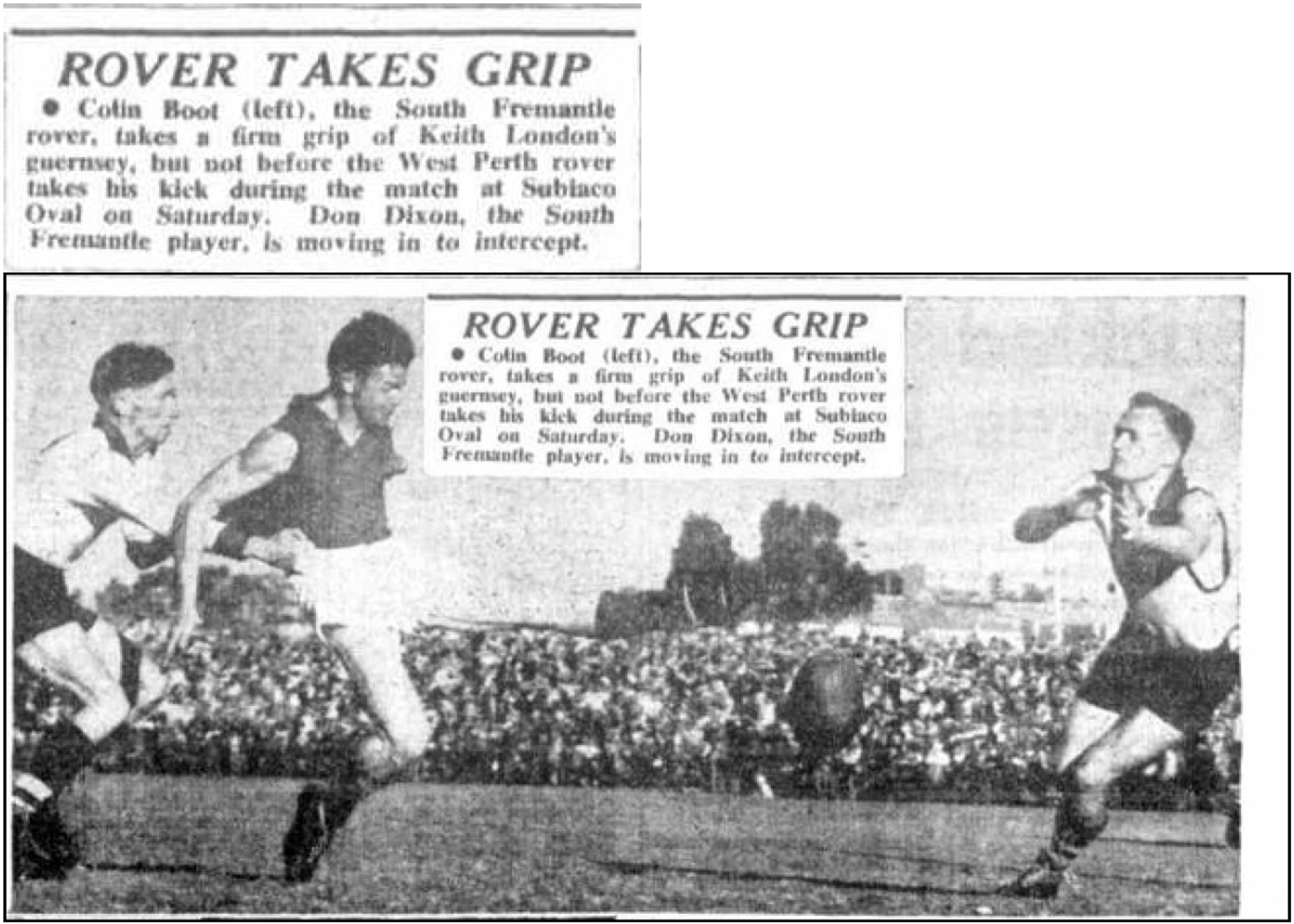Carol Lee
Vessel Name: Carol Lee
Colin Boot
Frederick Lindsay Hunt
Brian Sharp
Presumed Drowned at Sea; Never Found
18 November 1961

West Australian Front Cover

Carol Lee's Fishing Hut

West Australian (Perth, WA : 1879 - 1954), Monday 13 September 1954, page 20
The Carol Lee was a 30-foot steel boat built by amateur boat-builder and mechanical engineer, George Alfred Higgs, of 18 Davilak Road, Hamilton Hill. It was first launched for sea trial on 22 October 1961. During the seven months it took to construct, the boat was inspected by the Harbour and Lights Department. On launching, it was again inspected and was cleared for use as a fishing vessel. It was valued at £3000 and had £1000 worth of new equipment on board, but was not insured. It was skippered by Frederick Lindsay Hunt (33), a man with many years of experience on the coast from Fremantle northwards. His crew consisted of Colin Boot (30) and Brian Sharp (18), and they were to sail to Green Island, Lancelin on 18 November 1961 to meet with the owner the following day. Higgs was bringing further stores to Lancelin for the cray fishing venture.
The Carol Lee left East Street Jetty, Fremantle at about 12:20am on the 18 November for its maiden voyage carrying 85 cray pots, timber, corrugated iron, rope, floats, fuel oil, lubricating oil, an 11-foot light-grey clinker built dinghy, two 65 lb. anchors and a quantity of food, personal gear and bedding – cargo likely weighing in excess of four to five tons. In the police report, it is stated that the weather on the night of departure was not bad, the night being cool with a misty rain falling.
The ship and crew were expected to make the trip in 15 to 16 hours. At about 1:30pm on the 20 November Higgs reported to Beaconsfield Police the vessel was overdue at Green Island. A search was instigated. Floats bearing the mark C-L, a life jacket and pieces of wood were found scattered on beaches from City Beach to Whitfords. Other items bearing the mark were also found between Fremantle and Rottnest Island. Police had received several reports of flares having been sighted on the night the Carol Lee left Fremantle. Aircraft flying north from Perth were requested to search for the missing boat, and police patrols were made along the northern beaches. Searches continued until well into December without finding any trace of the missing vessel other than more floats.
On 19 December a cray fisherman, Robert Hugill, saw a number of floats 2½ miles off Scarborough Beach, and police divers made an unsuccessful search of that area. The following day the Carol Lee was discovered by William Mills, a boat-builder of Fremantle. It lay upright in 55 ft (16.8 m) of water about five miles off City Beach and a mile north of the ‘Bell Buoy’ (now known as the Fairway Buoy). On the 20 December, two police divers, Constables Ron Mitchell and Tom Corker, examined the wreck, but found no bodies. The day of their dive a huge shark was seen swimming around the hookah line. On their second descent they entered the Carol Lee’s wheelhouse, but a rolled mattress jammed in the cabin hatch foiled attempts to get inside. However, when Constable Corker put his hand inside the cabin he touched something ominously like an arm or leg. On bringing it out of the cabin doorway he discovered it was in fact a large salami!
They reported that there appeared to be no damage to the boat apart from smashed wheelhouse windows, and that the engine was in gear and the throttle in the forward position with the engine key turned to “on”. The bow of the wreck was pointing to the north. As Constable Corker reported, “It’s as if it filled up with water and went straight down like a stone”. The bodies of the three men were never found.
The Harbour and Lights Department held an inquiry into the sinking of the Carol Lee. Theories were submitted that the boat had either capsized in heavy seas, or that it took on so much water from the seas that it sank by the stern. It was decided that no Court of Inquiry would be held into the loss, probably because there was no firm evidence of what had occurred.
In their search for bodies during their initial dive on the wreck of the Carol Lee, police divers cut free the dinghy and those floats still tied to the deck. These were salvaged as they floated up. They also recovered a suitcase and blanket lashed together with rope, two kitbags and a case containing clothing and food. The divers noted at the time that there was an unused lifebelt in the cabin of the Carol Lee.
On 22 December the Fremantle Harbour Trust salvage launch, Cormorant, attempted to lift the wreck of the Carol Lee using its three-ton capacity crane. However, the fastening point on the wreck broke and the hull fell back to the bottom. It was then decided to try lifting it by using fourteen 44-gallon (205 litre) drums tied to it and subsequently inflated with compressed air. This again was unsuccessful. The next reported attempt at salvaging the hull occurred on 31 December, when, using six big air tanks, the wreck was twice raised to the surface but could not be held there. Further attempts were to be made using an extra two tanks.
In the interim six members of the Underwater Explorers Club dived to recover all the moveable gear and crew’s personal effects. This included tinned food, batteries, cray fishing pots, bedding, tools, ropes and hatch covers.
The wreck of the Carol Lee was finally salvaged on 20 January 1962, and towed to Mr. W. Langley’s slipway in East Fremantle. A young Barry Barbarich was one of the assisting crewmen in the salvage – he had lost his father, George, when his vessel the Marlene Ann had sunk off Jurien Bay in March of 1961. The Carol Lee had been underwater for two months, but within two weeks had been repaired, including the 75 horsepower diesel engine and returned to service. The engine was found to be in excellent condition, and after mud was cleared from the starter motor it ran smoothly. On 4 February the boat was taken back to where it sank to salvage further gear that had been left on the sea bed.
No reason could be found for the sinking of the Carol Lee and to this day remains a mystery.
In 1964 a Royal Commission in relation to the safety of ships was completed. It considered the evidence of the Carol Lee tragedy and concluded;
The cause of the disaster is unknown. The boat did not have a compass, steerage was by lights only. The only assumption which can be arrived at is that the skipper reached open and rougher water sooner than anticipated in a new boat he was not familiar with and was engulfed by waves, being fairly low in the water by reason of the load carried.
Frederick Lindsay Hunt missing person’s report filed by his wife states he was under a deep depression for about three weeks prior to sailing, over equipment and construction of vessel and money worries, but he was not considered to be suicidal. He was married to Margaret Anne Hunt. In June 1963, Irene May Hunt, the mother of Frederick Hunt, reported to Midland Police Station that she had seen her son twice since the tragedy, more recently stating he was driving a vehicle on Great Eastern Highway. Subsequent police enquiries did not verify her claim, and she later sought medical treatment for delusions.
Frederick’s brother, Norm, was also involved in crayfishing. In 1962 his 19 foot boat, the Providence, was driven ashore and sunk by heavy seas at Freshwater Point near where he had lost Tiderunner earlier in the season. The week before he had lost his caravan, tractor and all his personal belongings in a bush fire that swept through his coastal camp, and earlier he had been severely burnt on the arms and face when the engine of Tiderunner II caught fire near Geraldton. Later in 1970, the Tiderunner II was also involved in a tragedy when it disappeared with Eric Burlton and Robert Nederpelt onboard.
Colin Boot played for South Fremantle between 1952 and 1955 as a rover. He was last seen wearing a navy blue South Fremantle Football Club blazer as the boat left the jetty. He married Olive Mary Simms.
Brian Sharp (name changed by Deed Poll from O’Brien) was single and lived with his mother Mary Agnes Sharp in South Fremantle. He was just 18 at the time of the tragedy.
